Visiting Arley Hall and Gardens in Winter
Would you like to explore 500 years of history and beautiful formal gardens all at once? If so, then you should put Arley Hall and Gardens onto your itinerary when exploring the North of England in the UK.
Even though I think the estate would look its absolute best during spring and summer when the flowers are in full bloom, I think it was still charming in December. At least it gives me a chance to return during the warmer months.
If you’d like to see more of Arley Hall and Gardens then make sure to watch our Youtube video linked below. (It is quite a funny one…)
Disclosure: This post may contain affiliate links, which means we may receive a small commission if you click a link and purchase something. Clicking these links won’t cost you anything, but it will help us to keep this site up and running! Learn more about our affiliate policy.
Introducing Arley Hall and Gardens
Located in the village of Arley to the north of Northwich in Cheshire is the beautiful Arley Hall and Gardens. The country house is the stately home of Viscount Ashbrook and his family. The estate comprises an area of 2,000 acres including the Formal Gardens, the Grove and Woodland, and Stockley Farm which is an organic farm. Visitors have been able to enjoy both the house and gardens since the 1960s.
Most of the buildings and the Chapel on the estate are Grade II listed. The exception being the Cruck Barn which is listed as Grade I. Even the Formal Gardens are listed as Grade II on the National Register of Historic Parks and Gardens.
Did you know? – Arley Hall has been used as a filming location for many poplar movies and TV shows. Probably the best known one is Peaky Blinders, the BBC TV-show. But it was also used as a backdrop for The Adventures of Sherlock Holmes and for two of the wedding scenes in Coronation Street. Even though the Hall reminded me slightly of Bly Manor from the Haunting of Bly Manor, Arley Hall wasn’t in fact the one it was filmed at.
How to get to Arley Hall and Gardens
By Car – Arley Hall and Gardens are located approximately 10 miles (16 km) to the southeast of Warrington and 5 miles (8 km) to the north of Northwich. Use CW9 6NA in your SatNav and also follow the signs directing you to the Hall. You can park your car at the designated car park. If you arrive by car you’ll have to pay £2 for parking when you purchase your ticket.
If you don’t have your own car but would like to enjoy the freedom of a private vehicle, then you can always hire a car to get to Lyme Park.
By Public Transport – Not the easiest place to get to by public transport I must admit. But if you have no other option, I suggest taking the train to Northwich Railway Station first. Make sure to plan your journey with Trainline which also provides information on bus fares. From there you can take Bus Cat9 to the quaint village of Great Budworth. You’ll have to walk a good 2.5 miles (4 km) to reach Arley Hall from there.
Top Tip – If you’re planning on travelling across the UK by train a lot, then check out some Railcard options which allow you to save some pennies on your train fares.
By Bike – If you decide to hop on your bike there are plenty of national and local cycle routes running in the vicinity of the Hall. You can leave your bike at the bike racks by the shop entrance and explore the estate.

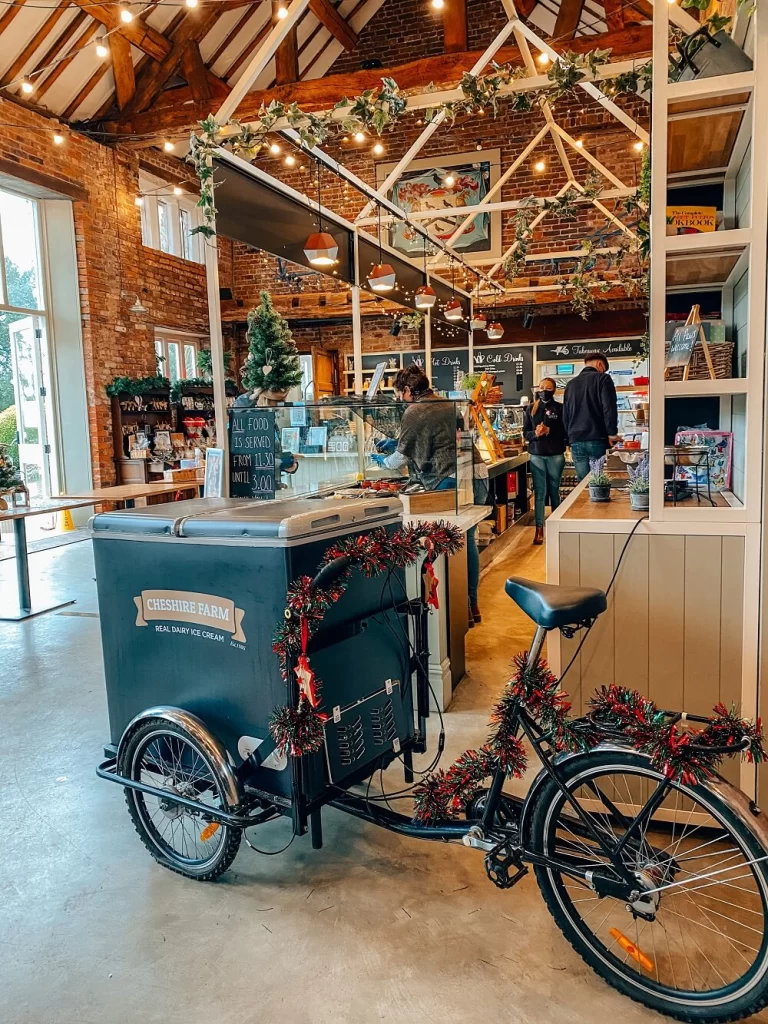
Cost to Enter Arley Hall and Gardens
Entry fee to Arley Hall and Gardens is £6 for adults and £3 for children between November and February. Then £12 for adults and £6 for children between March and October. You don’t need to pre-book your ticket; you can just turn up on the day. Further information on tickets can be found on the website.
If you arrive by car you’ll have to pay an additional £3 parking fee.
The gardens are open every day between 10:00 and 16:00.
Facilities at Arley Hall and Gardens
Café – Arley Hall has a lovely café offering some hot and cold drinks and you can also pick something tasty from their lunch menu. Even if you’re not planning on eating there, I highly recommend grabbing a drink at least and enjoying the beautiful and cozy interior.
Top Tip – Head upstairs and take a seat for a few minutes. The view is really gorgeous.
Picnic Spots – If you visit the estate on a nice day, I recommend bringing your own picnic with you. You can either sit within the designated picnic area within the informal grounds or anywhere within the formal gardens. There are plenty of benches within the garden or alternatively you can bring your own picnic blanket and find a great spot to eat.
Gift Shop – Stop by the gift shop if you’d like to browse for some home made products and trinkets.
Toilets – There are toilet facilities available next to the gift shop.

6 Things You Can’t Miss When Visiting Arley Hall and Gardens
Even though Arley Hall and Gardens are relatively small, you can definitely make a day out of your visit. I’ve summarised 6 features and areas you shouldn’t miss when walking around the Estate.
1. Pleached Lime Avenue
As you approach Arley Hall and Gardens you’ll walk through an avenue of beautiful pleached lime trees. During winter they weren’t as magnificent but I can only imagine how these lime trees look in season, creating a grand entrance to the estate.
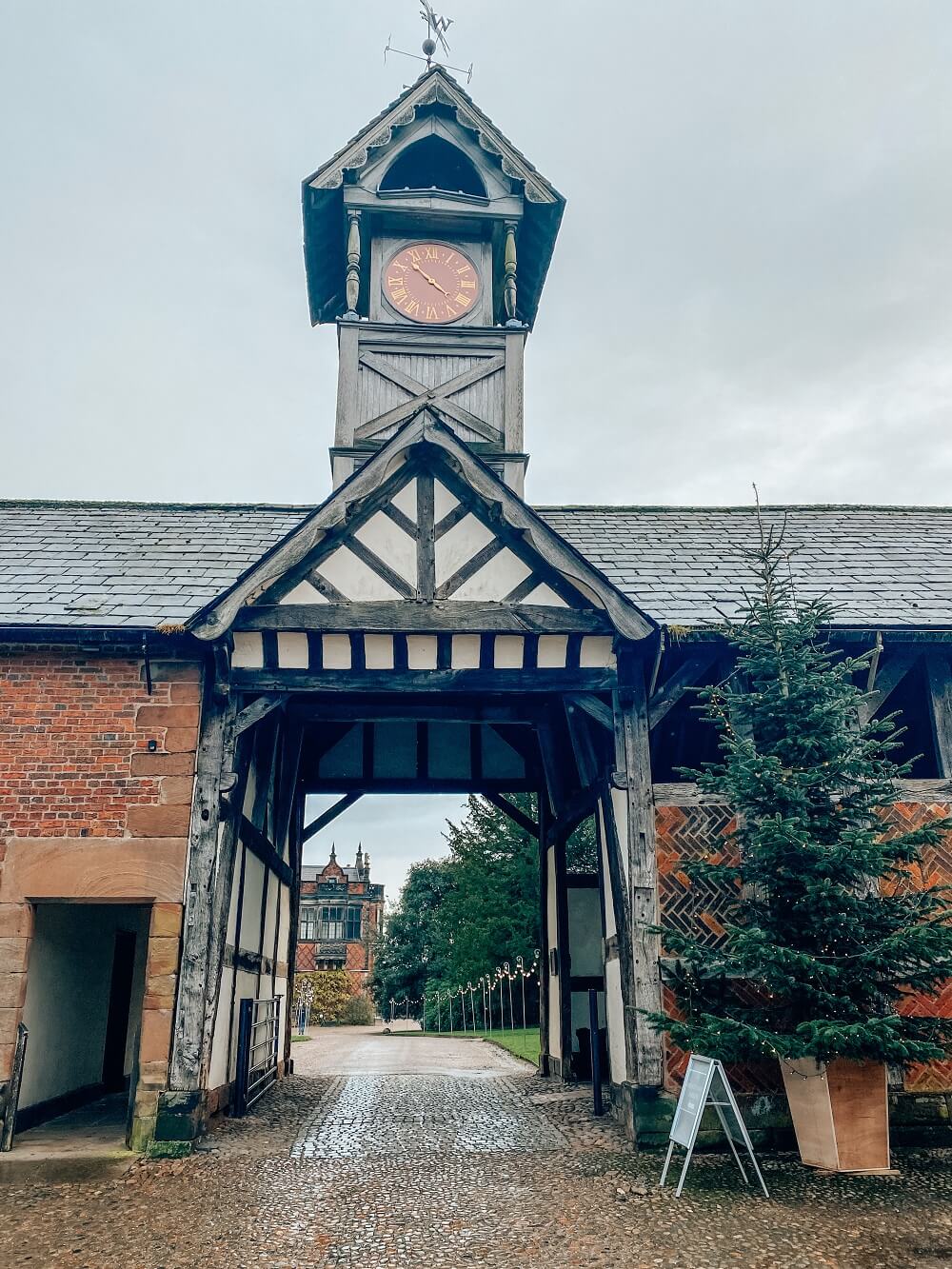
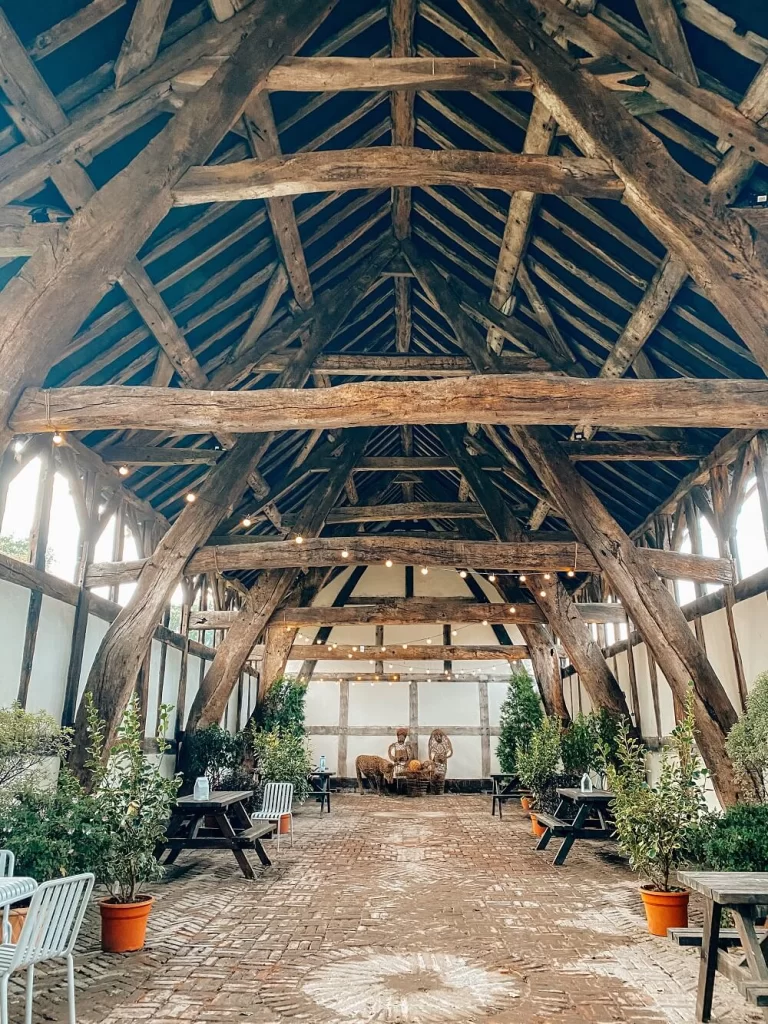
2. The Clock Tower and the Cruck Barn
From the Pleached Lime Avenue you’ll walk through an arch in order to access Arley Hall and its Formal Gardens. Don’t forget to look up before you walk through this arch because above it is a 19th-century Clock Tower. Interestingly, the clock only has one hand. (I must admit I completely missed that!)
Before you rush towards the gardens, check out the Cruck Barn underneath the arch to your right. It was built as a barn in 1471 before it was converted to a riding school in the 19th century, called The Ride. This building is actually listed as Grade I, which is considered of exceptional interest.
It looked so charming with the cruck trusses and decorated with fairy lights, plants and benches. What a perfect place to celebrate a special event like a wedding or an important birthday.
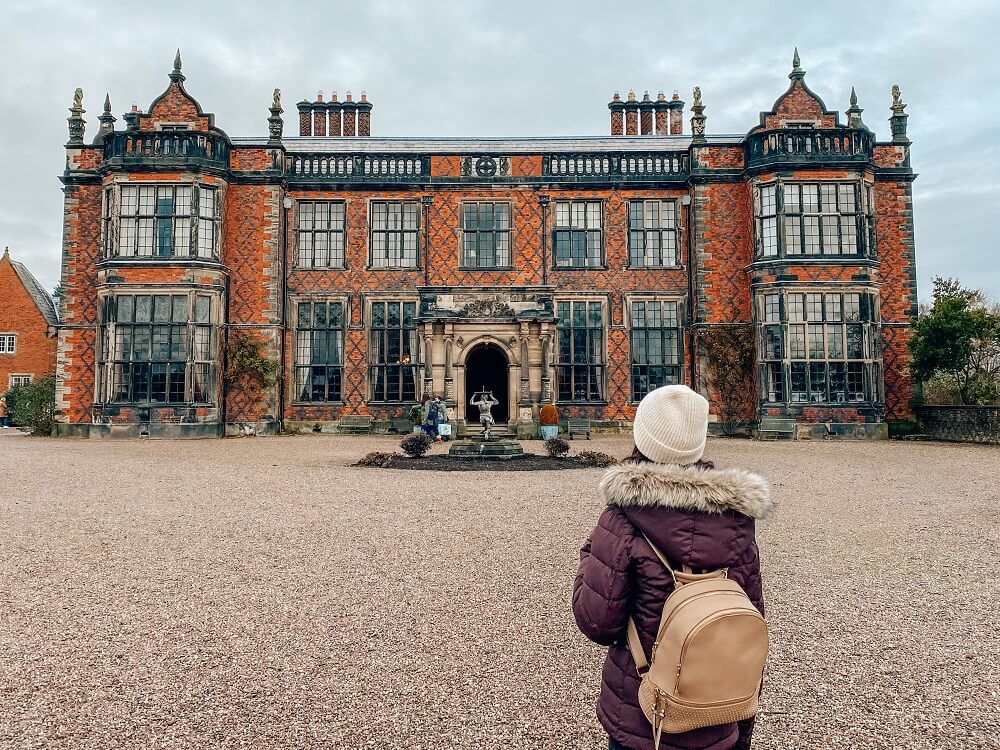
3. Arley Hall
If you can, then make sure you explore 500 years of history inside Arley Hall. The first hall was built back in 1469 on the same site as the one you see today. This present hall was built between 1832 and 1845 when Rowland Egerton-Warburton took over the estate and decided to replace the old house. Copying elements of Elizabethan architecture, George Latham designed the house in a style that became known as Jacobethan.
The Hall is a member of Historic Houses and was designated as a Grade II listed building in 1959. It has many stunningly designed rooms and features for you to explore such as the library, the dining room, the gallery and the grand staircase just to name some. Unfortunately, we couldn’t go inside on this occasion, but at least we have another reason to return in the springtime.
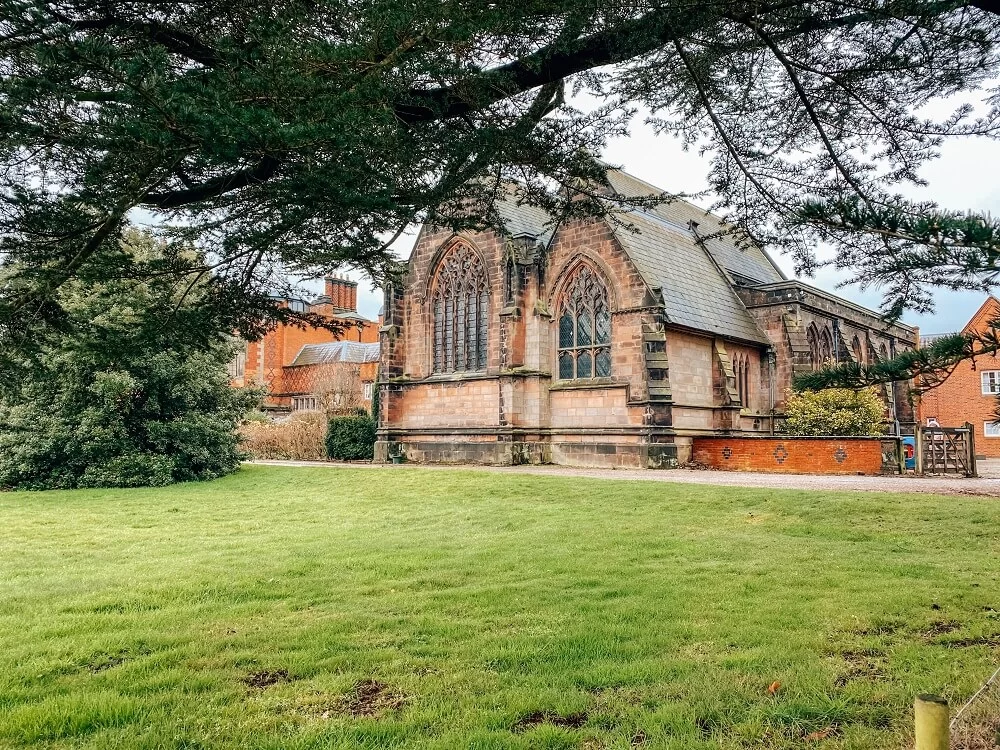
4. The Chapel
Until 1845 church services were held in the old building to the north of the Hall. In 1841, inspired by the Oxford Movement, Rowland decided to add a Gothic Chapel to hold religious services in a more ceremonial style. The chapel – dedicated to St. Mary – was finished in 1845 and it was designated as a Grade II listed building in 1979.
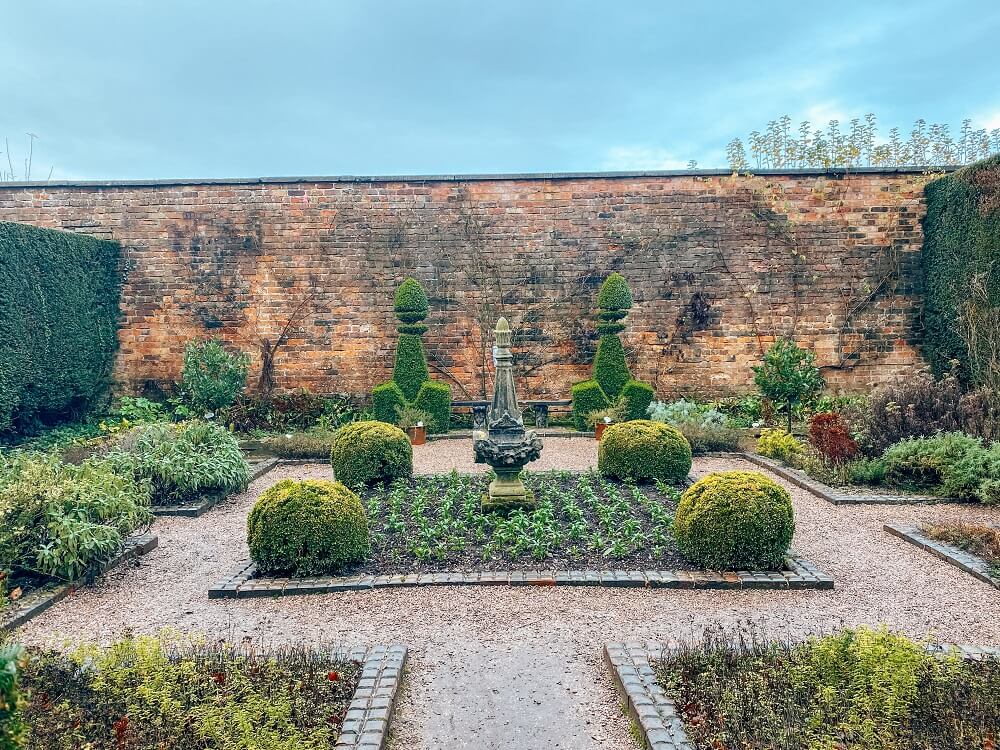
5. The Formal Gardens
The first gardens within the present Formal Gardens were created back in the 18th century. They were then developed over the years by different generations of the family, blending together the traditional and more modern designs. Therefore, it shouldn’t come as a surprise that the gardens are often referred to as ‘some of the finest in Britain’.
The gardens have won a few awards over the years such as the Christie’s Garden of the Year Award in 1987 and were also selected as one of the Gardens of Distinction for Cheshire’s Year of the Gardens in 2008.
Trust me, there is plenty to see within this 12 acre Formal Garden. I’ve summarised below the different sections of the gardens that you mustn’t miss when exploring them.
Scented and Herb Gardens
The first areas you’ll walk past are two small gardens, the Herb and the Scented Gardens. The Herb Garden contains some unique herbs like strawberry and chocolate mint and the Scented Garden has some strongly scented flowers and shrubs.
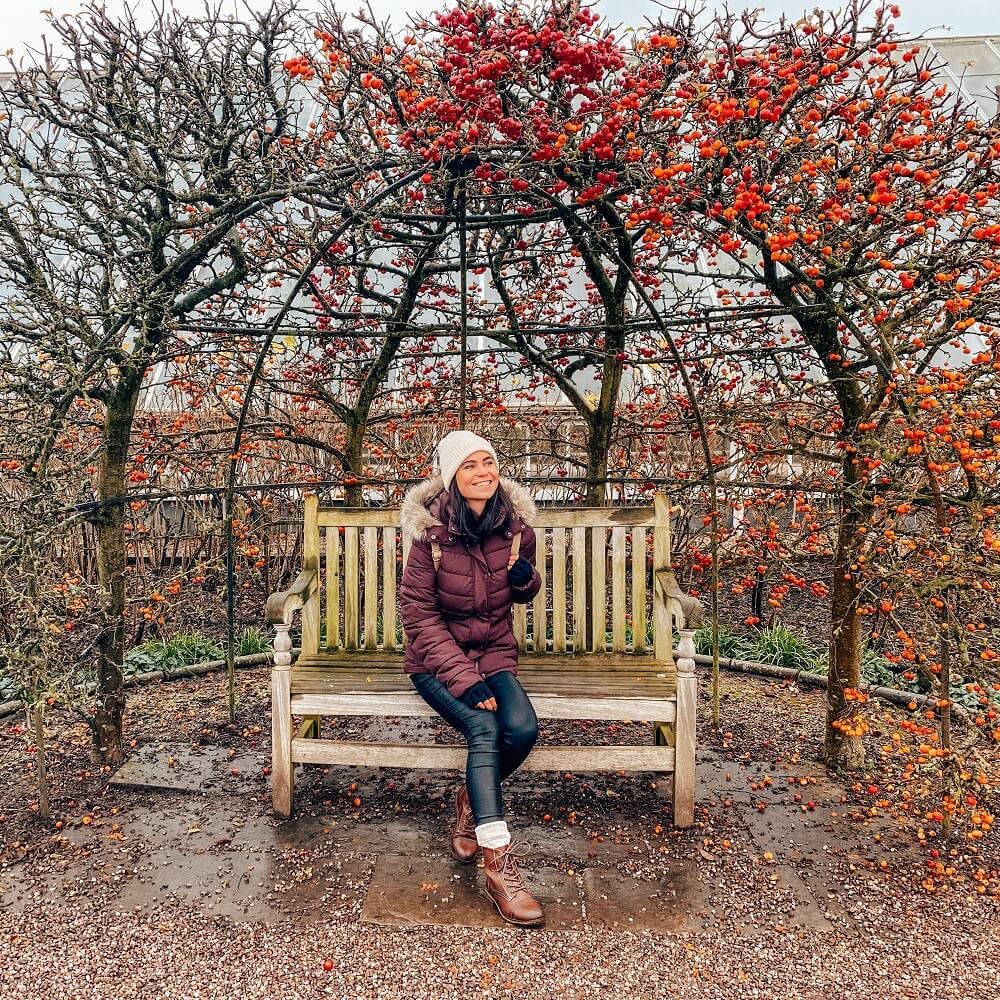
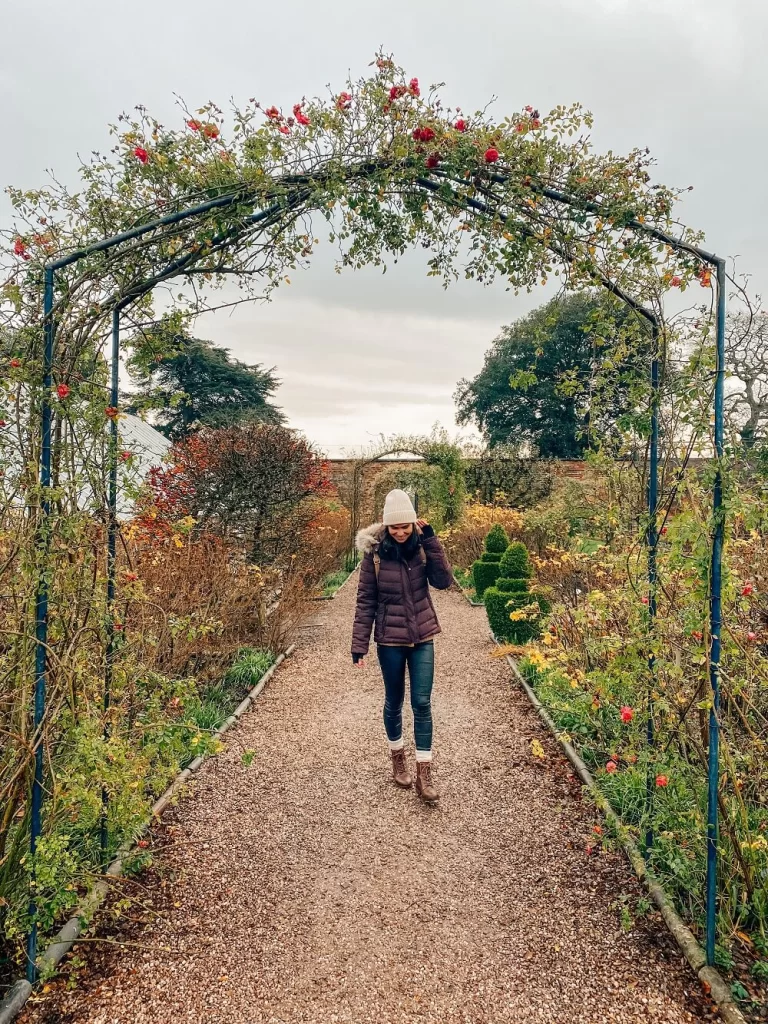
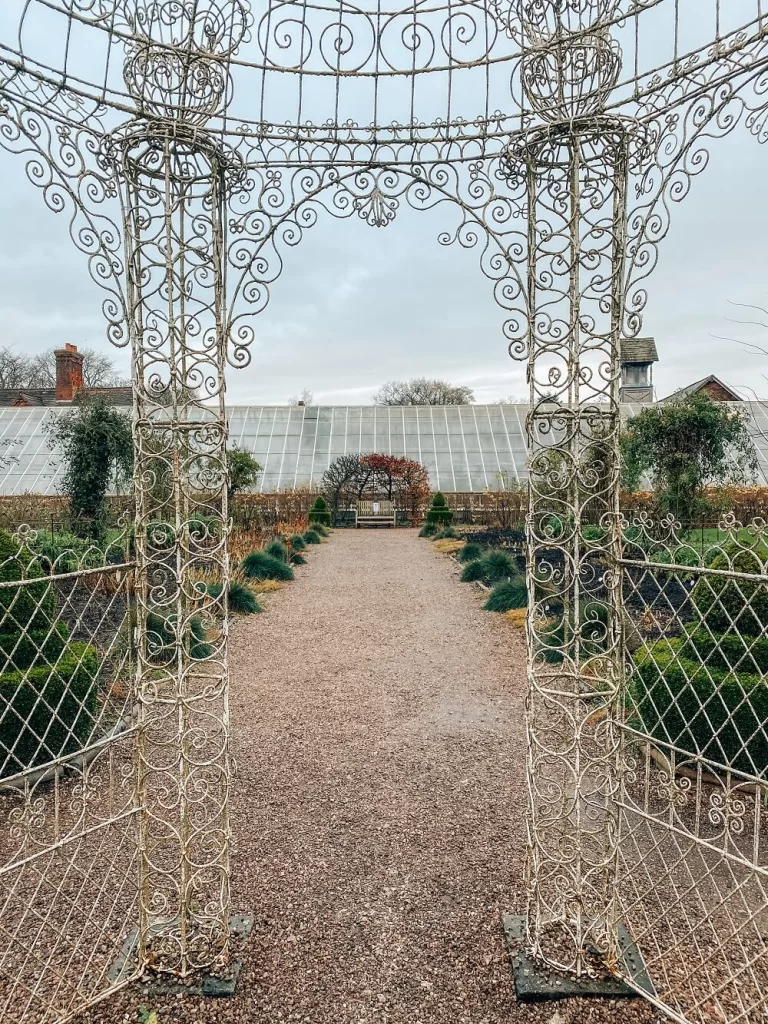
Kitchen Garden
The next section is the Kitchen Garden. There are two structures not to miss here, namely the Malus Seat and the Arbour. The Malus Seat is enclosed by an arch of Malus trees and the Arbour is made from painted wirework.
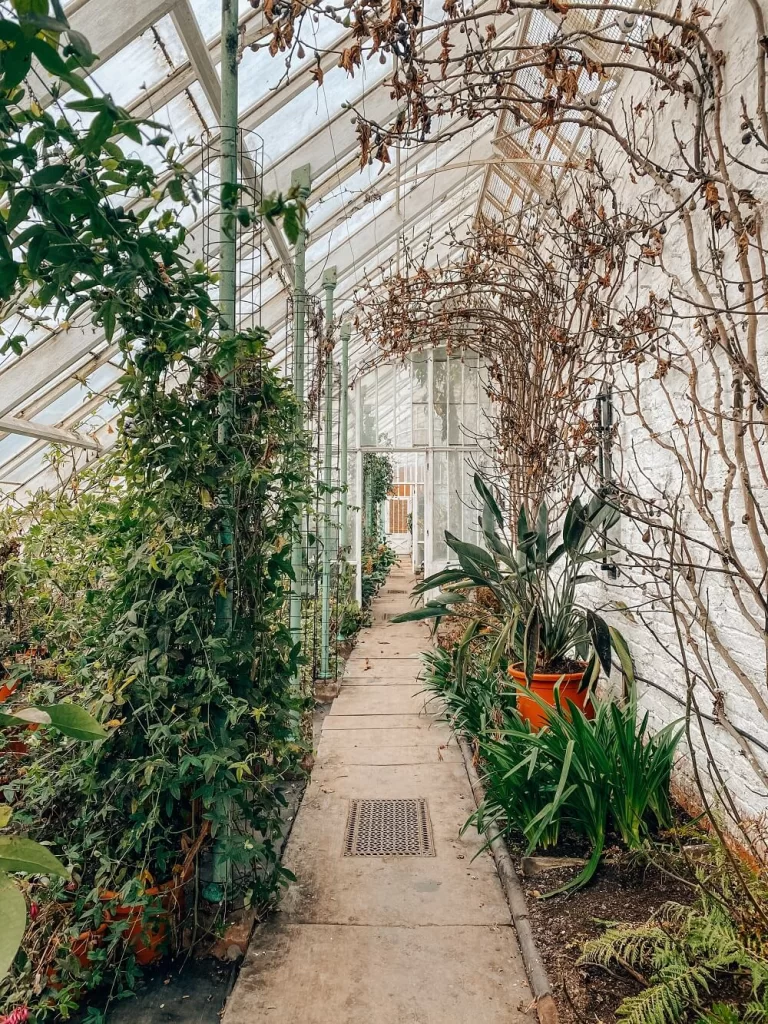
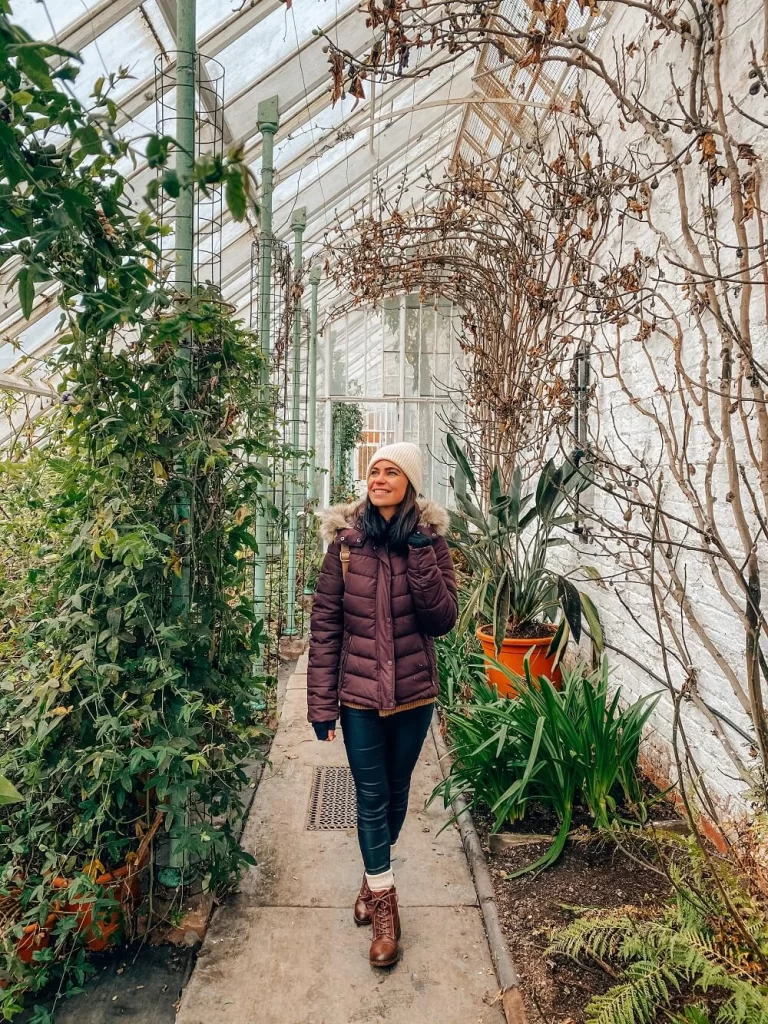
The Vinery
Before leaving the Kitchen Garden, make sure you walk through the Vinery. The greenhouse is located to the north of the Kitchen Garden and was built in 1872/73. It has some fig trees and great vibes even in December.
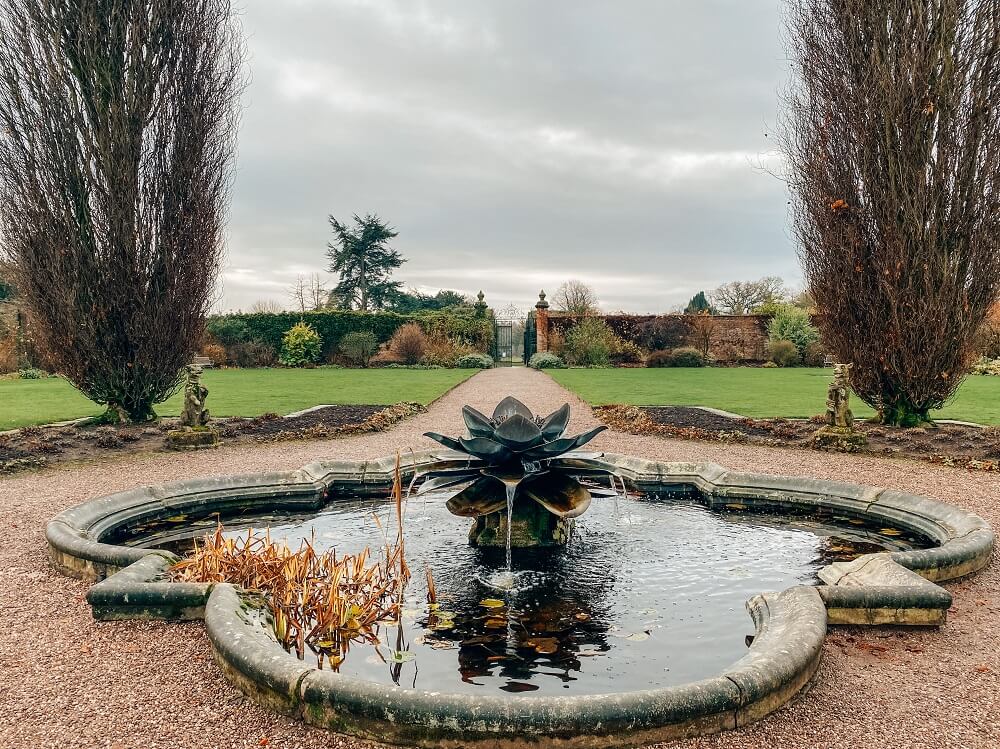
Walled Garden
Next to the Kitchen Garden is the Walled Garden. Interestingly, this was one of the kitchen gardens before it was redesigned in 1960.
Now it has a pond in the middle with a modern flower sculpture. There are four heraldic beasts surrounding the pond which used to be on the roof of the house.
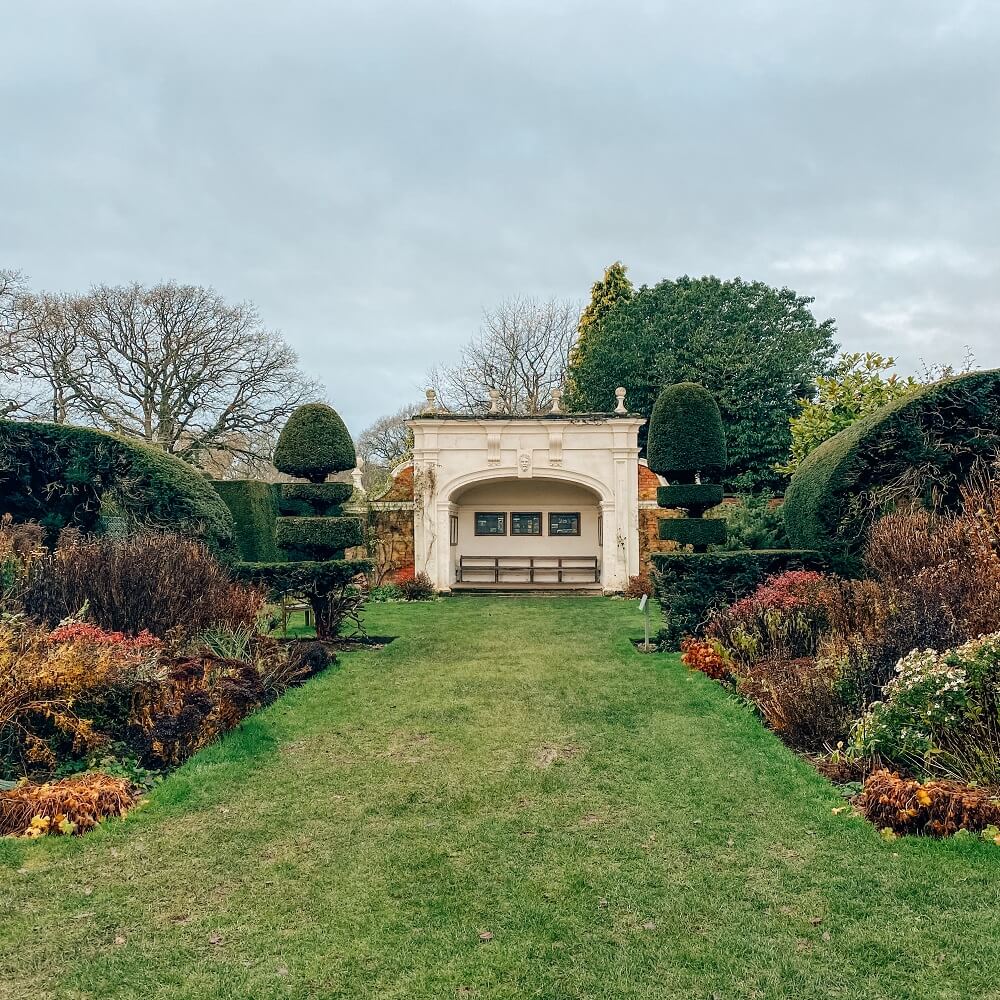

Herbaceous Border
After leaving the Walled Garden you’ll enter the best feature of the Formal Gardens, the Herbaceous Border. This double Herbaceous Border – built in the 1840s – was actually the first one in England and it’s still considered one of the finest.
It has four pairs of flowerbeds that are backed up by yew hedges on one side and the 19th-century wall on the other side. At one end you’ll see The Alcove, which was built in 1790.
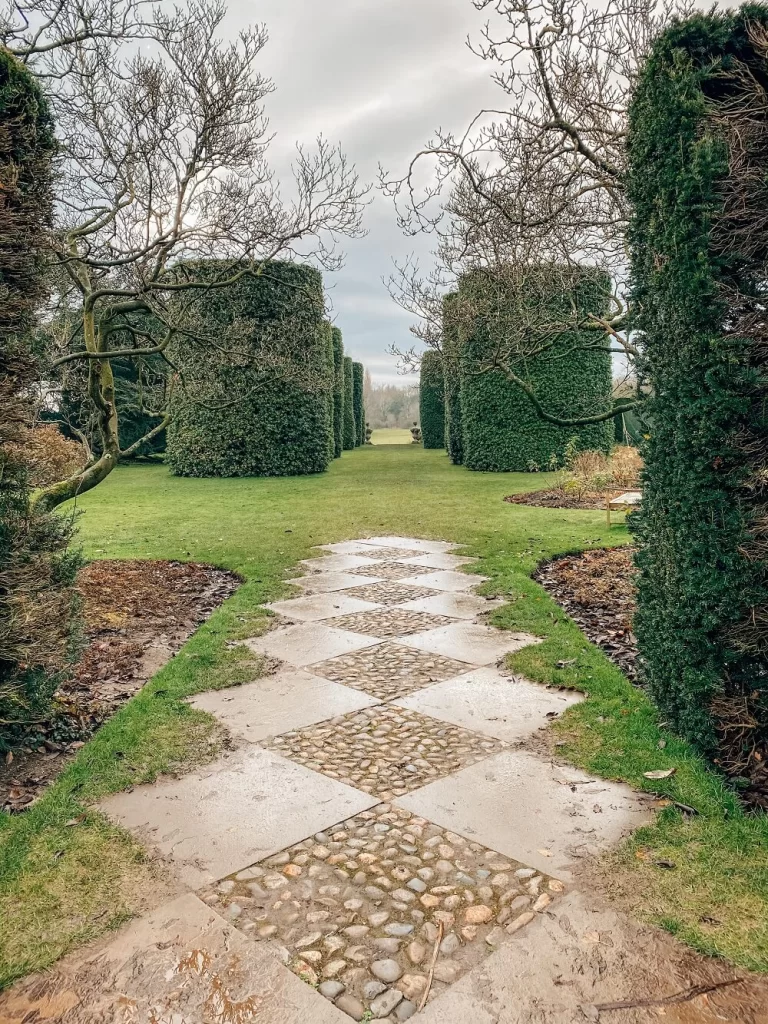
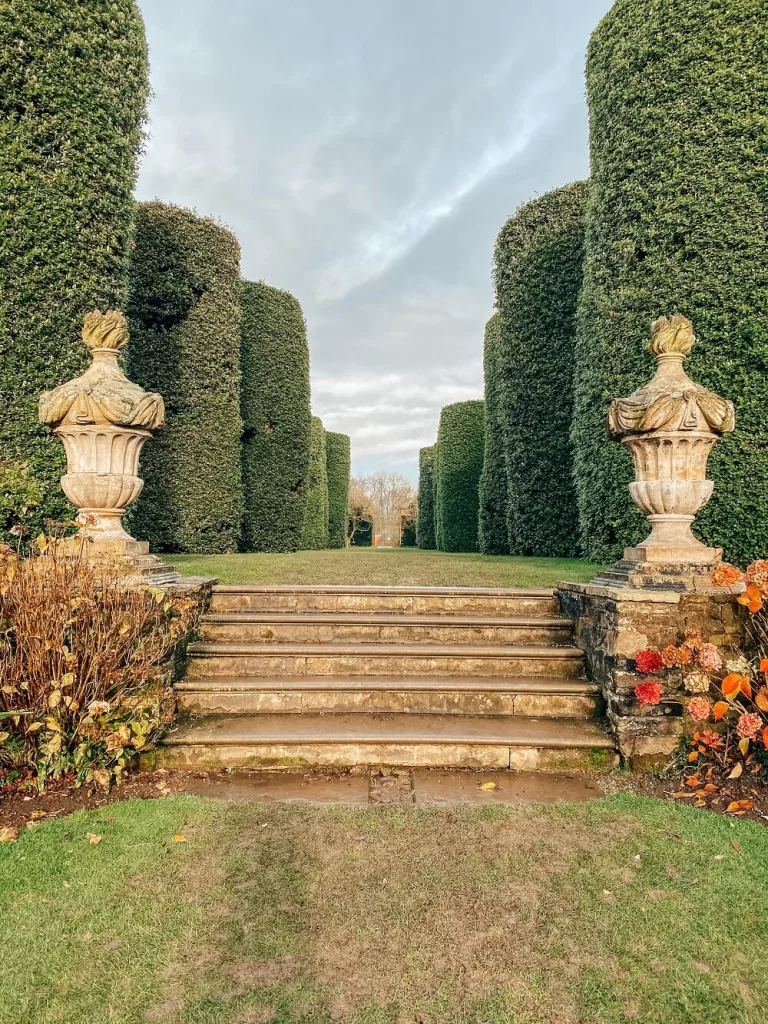
Ilex Avenue
Ilex Avenue consists of seven pairs of 8 m (26 ft) high and 3 m (9.8ft) wide holm oaks clipped into cylinder shapes. When I first saw this avenue I genuinely felt like I’d just stepped down the Rabbit Hole into Alice in Wonderland.

Shrub Rose Garden
To the left of Ilex Avenue you’ll see the Shrub Rose Garden. Of course since we visited the Gardens in winter, the roses weren’t blooming. However, I can imagine this section looks and smells fantastic in the right season.
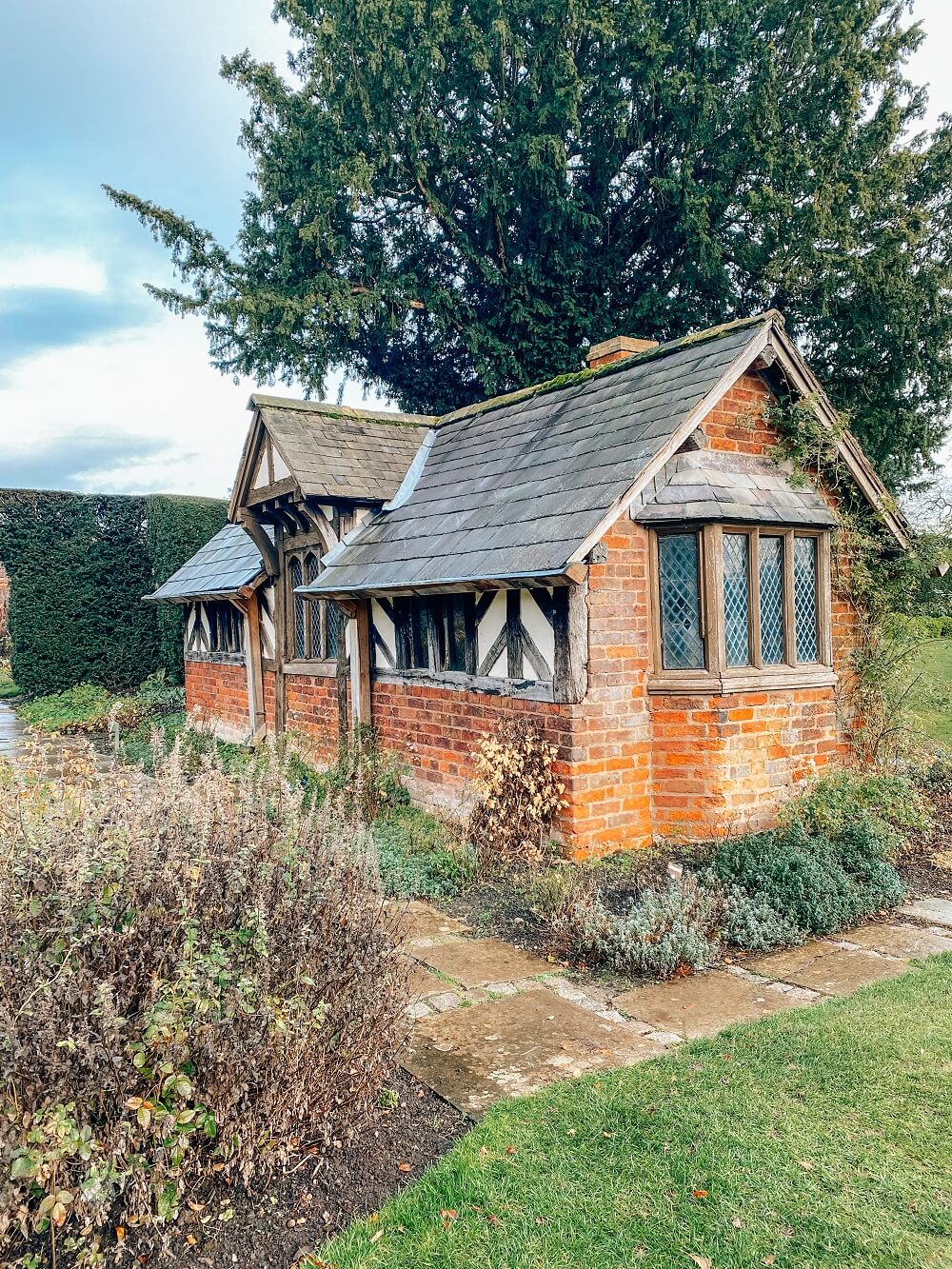
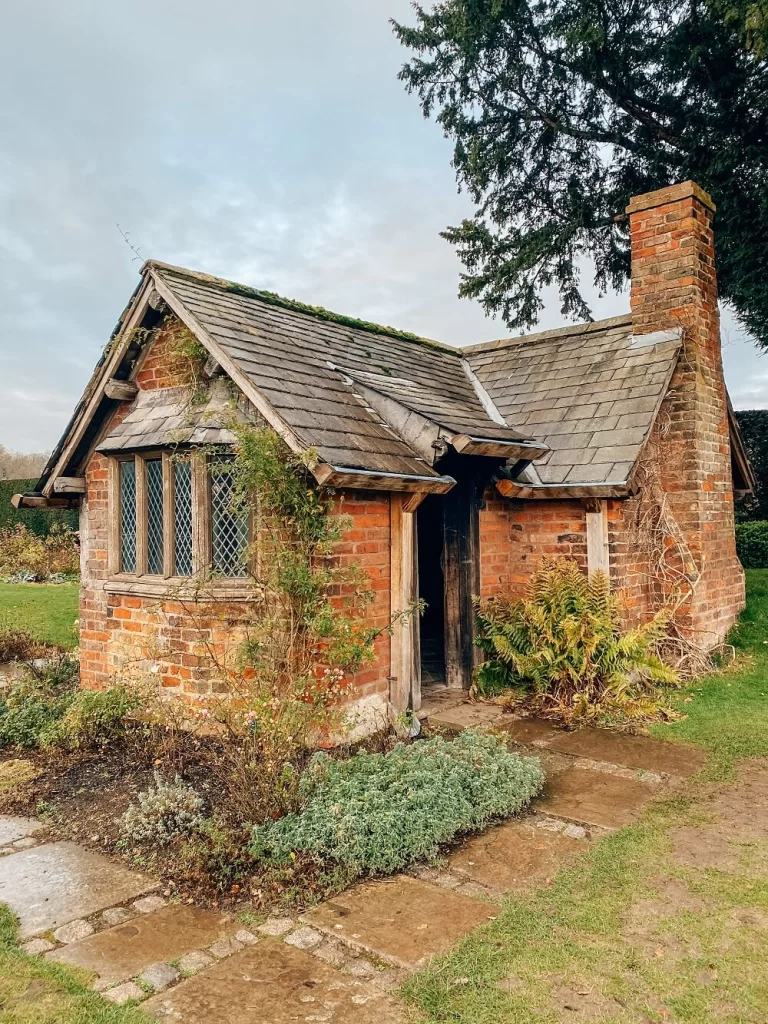
Tea Cottage
From the Shrub Rose Garden you’ll probably see a cute cottage. This half-timbered building is known as the Tea Cottage. It was built in the 19th century and as the name suggests it was used to host some afternoon tea and garden parties by the family. Isn’t this your childhood (or even adulthood) dream setting for hosting a tea party?
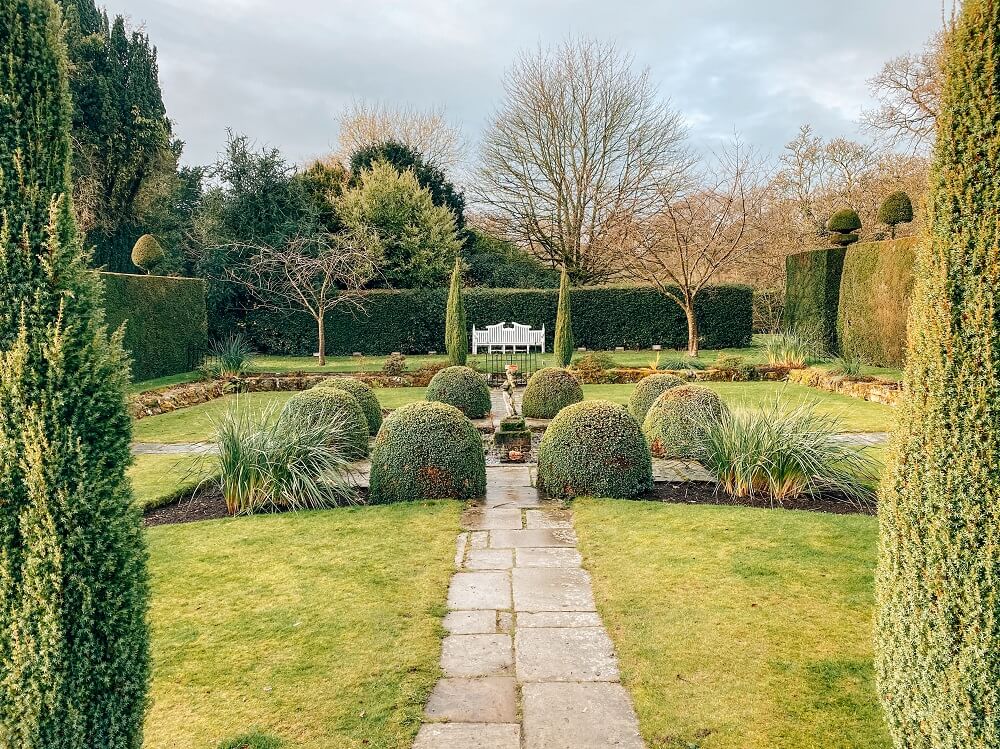
Fish Garden
You’ll also walk past a smaller sunken garden called the Fish Garden. It only has a small pond with a sculpture in the middle and some benches around it. The pond was a bit overgrown in December and we couldn’t see any fish but I assume they will be there in the warmer months.
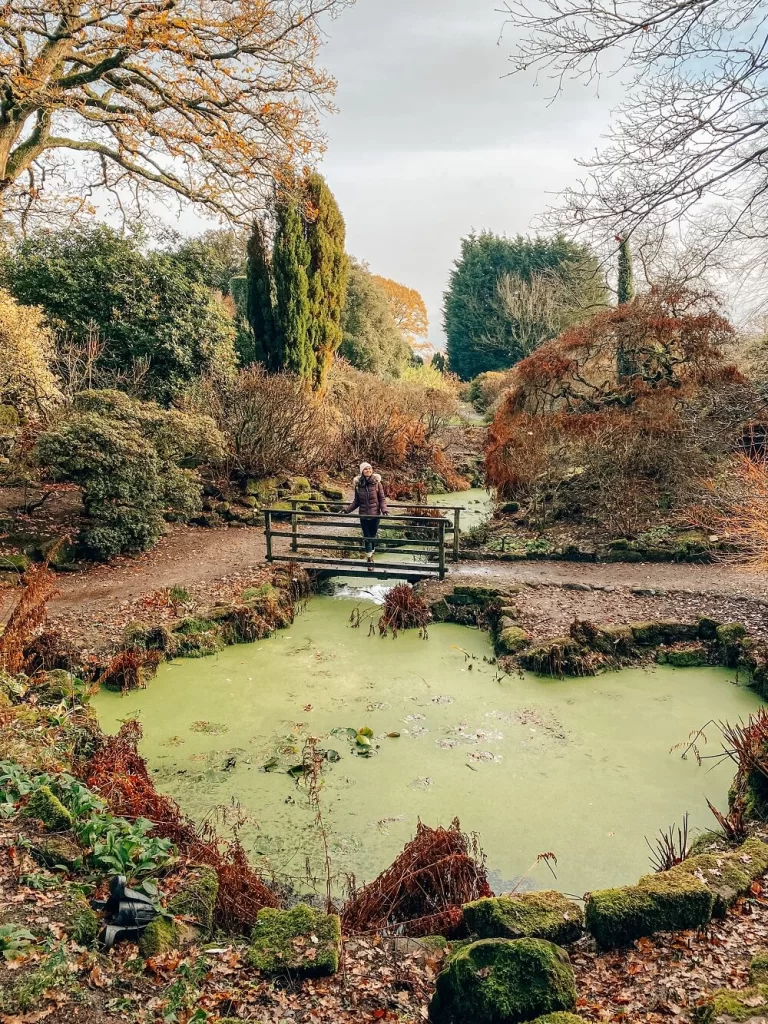
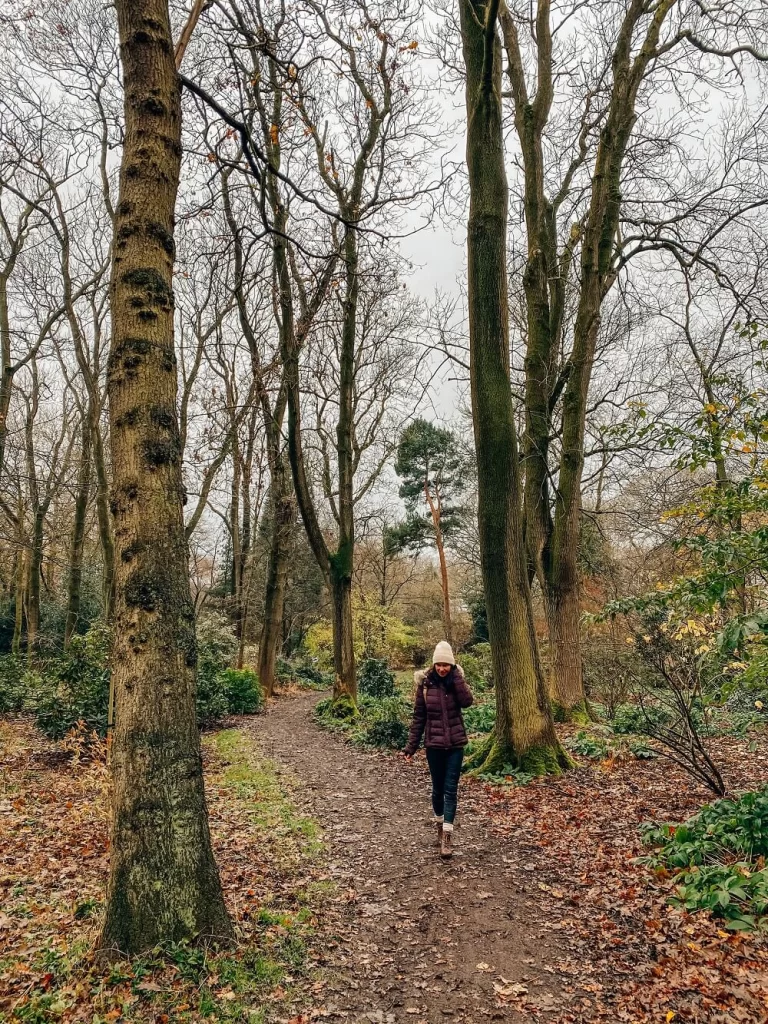
The Rootery
From the Fish Pond you can explore a cool little area called The Rootery. It was created as an alpine rock garden in the 19th century. However, since 1960 flowering shrubs were planted to create this magical place. I really enjoyed exploring this area since it reminded me of the Rock Garden at Chatsworth House and Gardens which is my favourite area there.
Sundial Circle
Time flies when you’re having fun don’t you agree? But how much time did you just spend exploring the Formal Gardens of Arley Hall? Well, if you’d like to know then you can just check the time on the sundial at the southern edge of the gardens.
How cool is it that this 12-acre garden has a sundial? This 18th century structure consists of a kneeling figure with a dial on his head and a 20th century gnomon.
6. The Grove and Woodland Walk
Once you’ve finished exploring the Formal Gardens, head over to The Grove. This is an informal garden in a woodland setting. It has many different plants such as rhododendrons, azaleas, exotic trees and other shrubs. At the end of The Grove there’s a little woodland walk too that you can circle around. I must admit the area is probably much prettier during spring /summer than it was in December. However, I still enjoyed its atmosphere so make sure you don’t skip it.
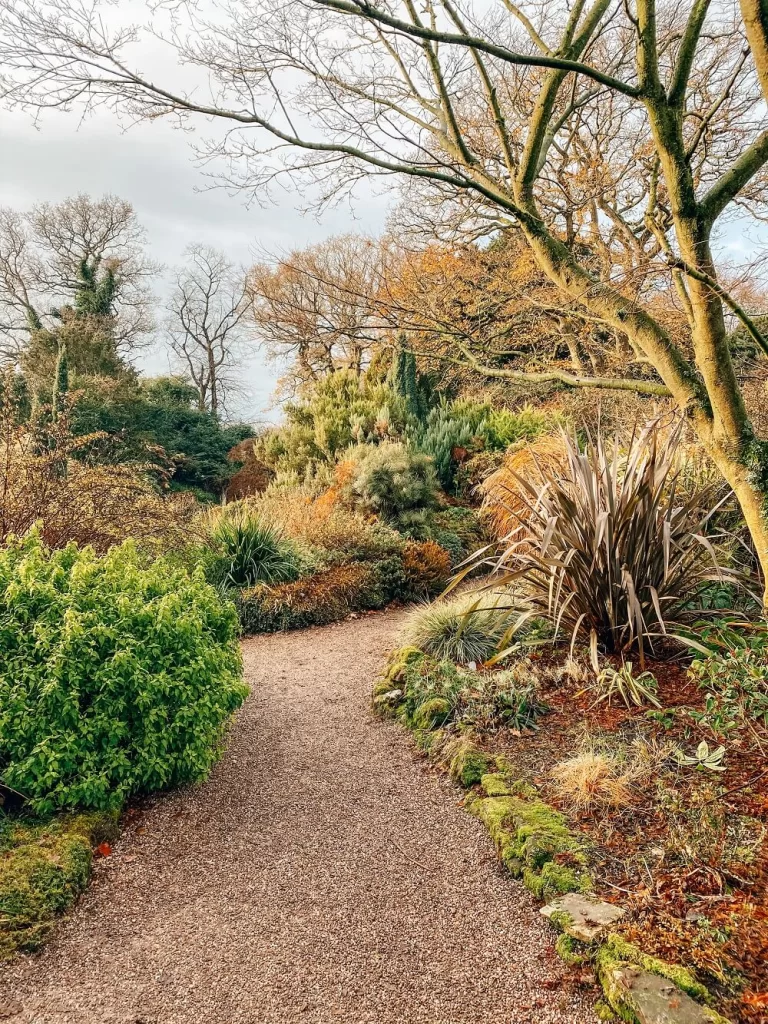
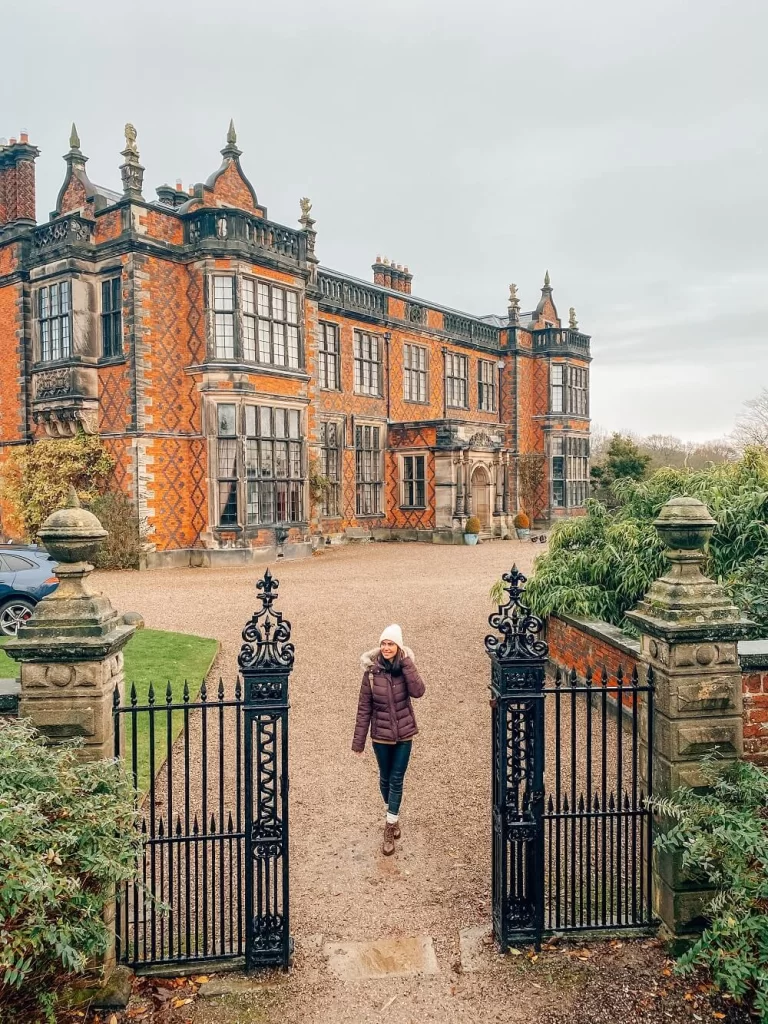
Additional Places to Visit in the Area
If you’d like to visit other gardens and estates, including National Trust sites that are less than an hours drive away from Arley Hall then make sure to check out some of my other blog posts:
Biddulph Grange Garden – A unique National Trust Garden where you can visit China, Egypt, Italy and many other places in just one day. If you love combining travel, science, religion and horticulture, then you must put Biddulph Grange Garden onto your itinerary.
Dunham Massey – Explore a historical country house, stroll through a beautiful garden and watch deer casually roaming around you at Dunham Massey. You can read about 6 things to do when visiting the Dunham Massey.
Chatsworth House and Gardens – Explore Britain’s favourite country house and thousands of acres of surrounding parkland.
Quarry Bank Mill – Learn about the history of one of the best preserved textile factories of the Industrial Revolution. Walk around the beautiful garden, explore Styal Country Park and spot planes at Manchester Airport. You can read about 7 things to do to get the most out of your visit at Quarry Bank Mill.
Tatton Park – Owned by the National Trust, Tatton Park is a beautiful historical estate situated to the north of Knutsford. Since the estate has a mansion, a medieval manor house, 50 acres of gardens, an animal farm and 1000 acres of deer park you can easily spend a full day there. You can read about 8 things you must do when visiting Tatton Park.
Lyme Park – This popular National Trust estate has everything you need for a perfect day out: a glorious house filled with history, a magical garden packed with colourful flowers and unique features, a sanctuary packed with deer, many walking trails and stunning views of the surrounding area.
Final Thoughts on Visiting Arley Hall and Gardens
I hope you enjoyed this tour around Arley Hall and Gardens. Have you ever visited the place before? If not, make sure you let me know in the comments below whether it landed on your bucket list or not. I highly recommend you plan a visit during spring when the flowers are starting to bloom.
In case you already have, let me know which part of the garden was your favourite. It’s hard to decide, but I definitely enjoyed exploring the Rootery and of course the Herbaceous Border.
Now, let your adventure begin,

Our Top Travel Resources
Accommodation: For hotels we always use Booking.com and Hostelworld for hostels. We also book longer stays on Airbnb or Vrbo.
Flights: To find the best flight prices we always check Skyscanner, Google Flights or WayAway. Then we also check the airlines’ websites too for comparison.
Car Rentals: We use Discover Cars when we want to rent a car as it compares local, national and international companies.
Activities: If we book organised tours we always check either GetYourGuide or Viator.
Foreign Currency: Whenever we can we prefer to pay in local currency and for that we always use our Wise card. We can easily withdraw money from the ATM or pay by card at most shops and restaurants.
Travel Insurance: We never go anywhere without travel insurance. You never know what will happen on your trip, so good travel insurance like SafetyWing can protect you in case of injury, illness, theft and cancellations.
eSIM and VPN: To get data abroad we use Airalo which is an app that allows you to download a prepaid eSIM to your phone in over 190 countries. Make sure to have a VPN to avoid hackers accessing your personal data when using public WIFI. We use Surfshark which is the only VPN that offers one account on unlimited devices.

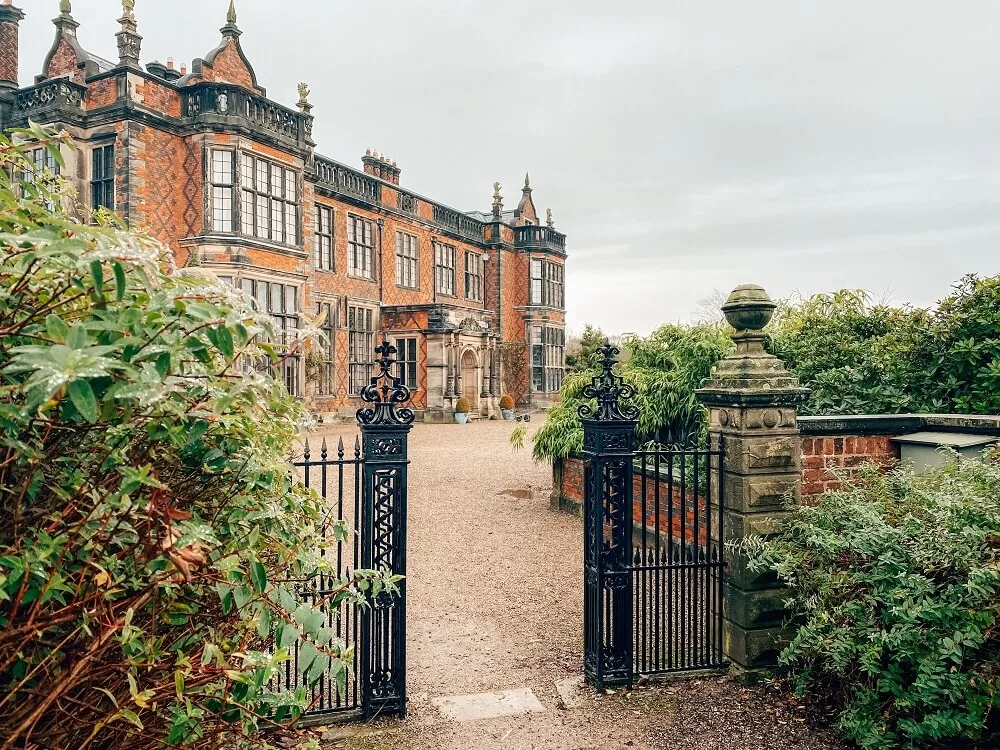
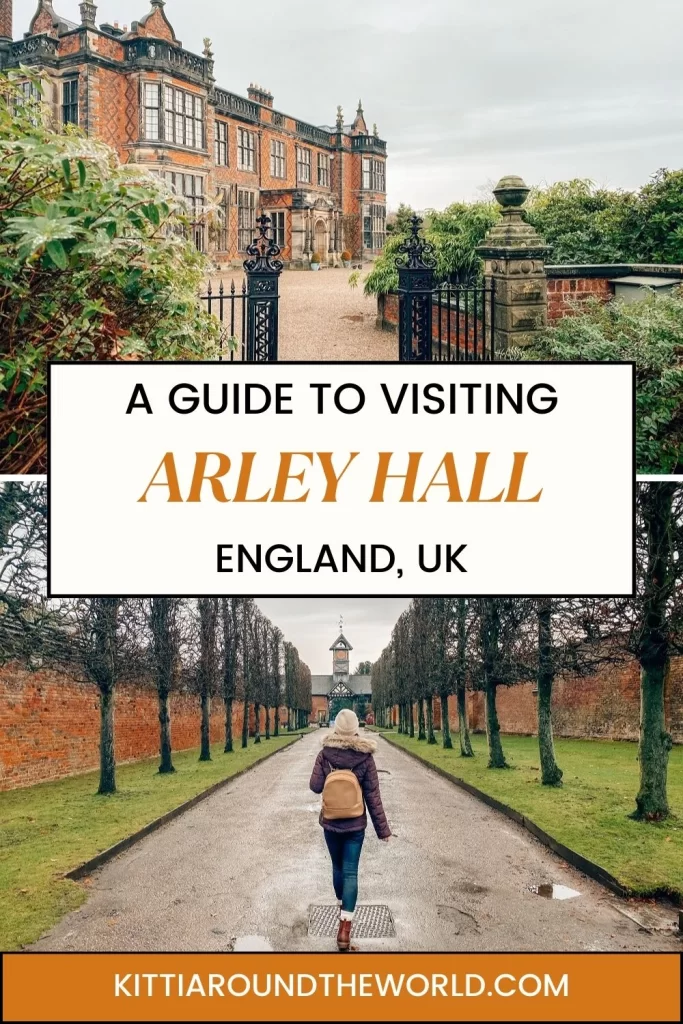
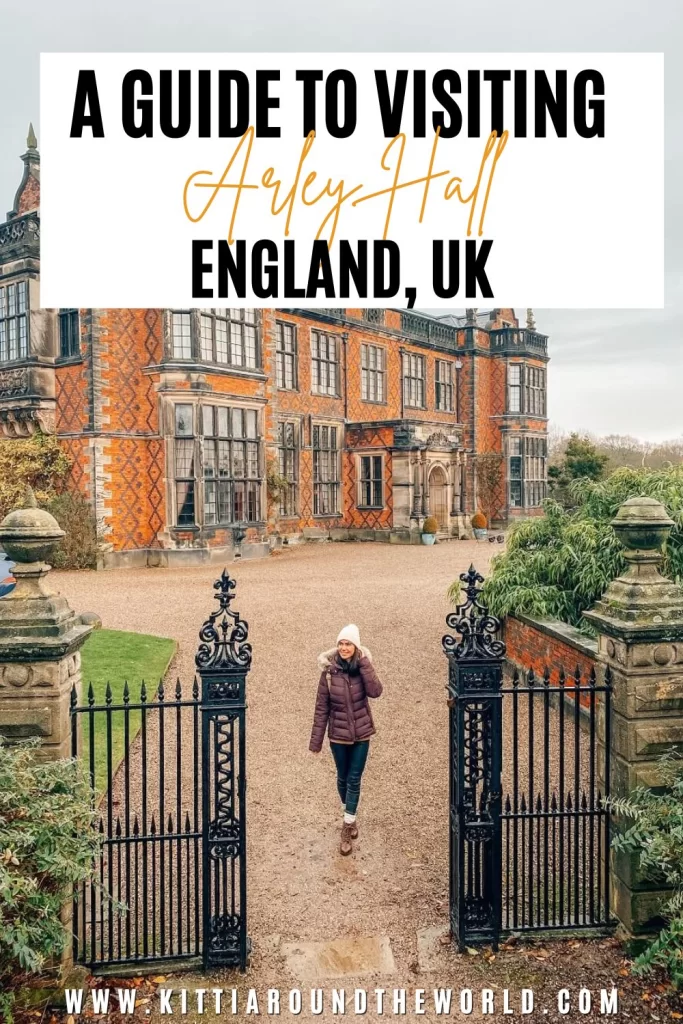
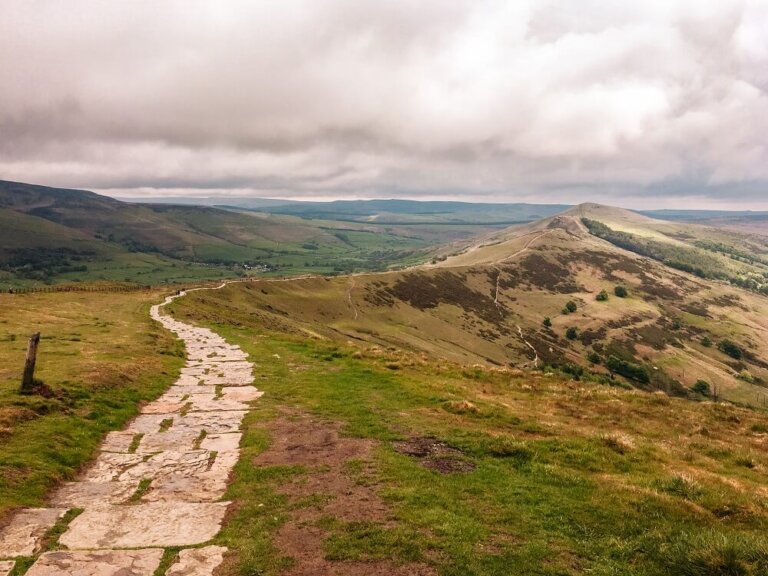
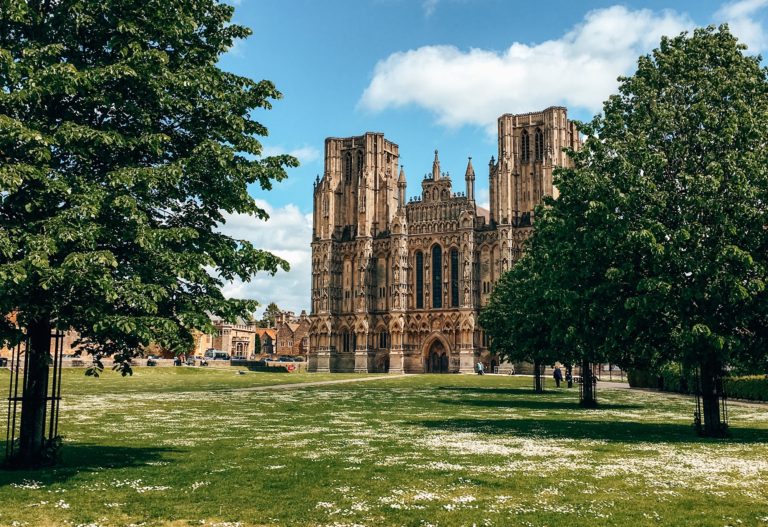

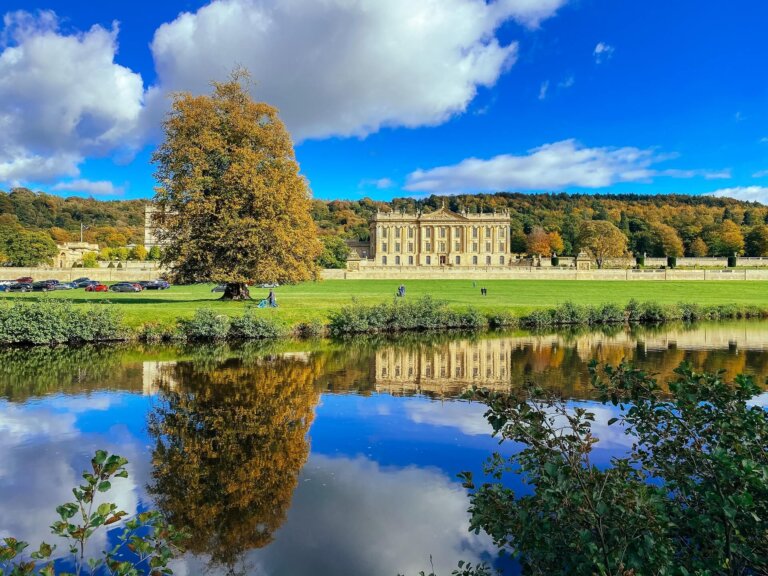
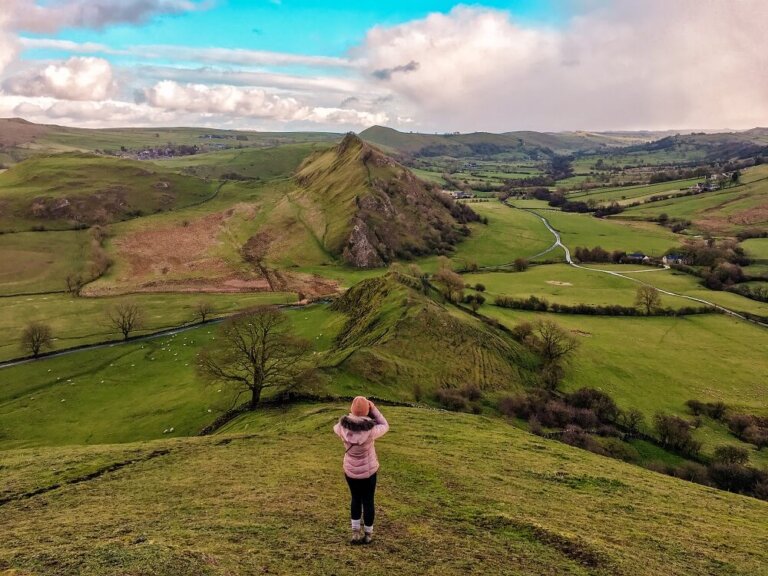

The gardens are fabulous!!! I loved the pleach lime walk as well. Of course, touring the house and chapel would certainly be a highlight. Thanks for sharing this lovely site.
Yes you’re right, I’d love to explore the house and chapel too. Will definitely return in the spring to see the pleach lime trees in their full glory.
Thanks for this! I have always meant to visit Arley Hall, and it now I will definately make the effort. It is close to where I grew up and I pass the sign for it every time I go back! It looks like a very pleasant place to spend an afternoon. They certainly have packed a lot into 12 acres! Hopefully will be fully open soon and can see the house too.
Sometimes we don’t realise that there are many hidden gems right on our back yard. I’m happy that my blog post inspired you to visit Arley Hall, I hope they will open the up the house in the new year.
Arley Hall is so pretty! Exploring old homes like this is always amazing. We got hooked after seeing the Biltmore!
We got hooked visiting these gardens and homes this year since we can’t do much more, and it’s been so much fun! I checked out the Biltmore and wow that place looks stunning, no wonder you fell in love with it!
Absolutely stunning! I can’t wait to visit, when the Covid restrictions are lifted, so I can explore Arley Hall in person.
I’m sure you’ll enjoy your visit. I cannot wait to be able to travel more either and explore more of these hidden gems 🙂
I’ve heard of many gardens and been to almost as many… but I hadn’t heard of this one!! I adore it from your descriptions and pictures – hopefully I’ll be able to make it back to the UK and add this garden to my list.
Happy to hear that you also love exploring these halls and gardens. They are so much fun and you can learn a lot about history. I hope you can return to the UK in the near future.
Everything looks so beautiful and magical! Would totally love to visit, especially the clock tower.
I was actually quite surprised to see how beautiful the place is. I’m sure you’d love your visit just as much as I did!